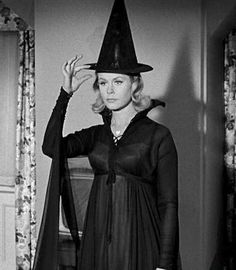 Earlier this television season, we celebrated the 50th anniversary of the premiere of ABC’s 60s/70s supernatural smash sitcom, Bewitched. As we close the parenthesis on this jubilee of Bewitched’s freshman season, we also observe a much more solemn anniversary:
Earlier this television season, we celebrated the 50th anniversary of the premiere of ABC’s 60s/70s supernatural smash sitcom, Bewitched. As we close the parenthesis on this jubilee of Bewitched’s freshman season, we also observe a much more solemn anniversary:
Today marks 20 years since Elizabeth “Lizzie” Montgomery (Samantha Stephens) died. To honor her, I talked to a “coven” of experts on her legacy and the impact she and Bewitched had on the LGBTQ communities. I supplement these experts’ research with some of my own from inside Agnes Moorehead’s (Endora, Samantha’s mother) personal archive.
To preface, let me say that this is a selfish endeavor. I, like so many other young queer kids, found resonance in Samantha Stephens as well as her powerful, flamboyant, and ball-busting mom, Endora. Before I could even grasp the notion of a deviant sexuality or gender performance, something about dissolving myself into Samantha’s colorful world -- with its unending parade of queer magical beings -- made me covet her life beyond the broom closet. 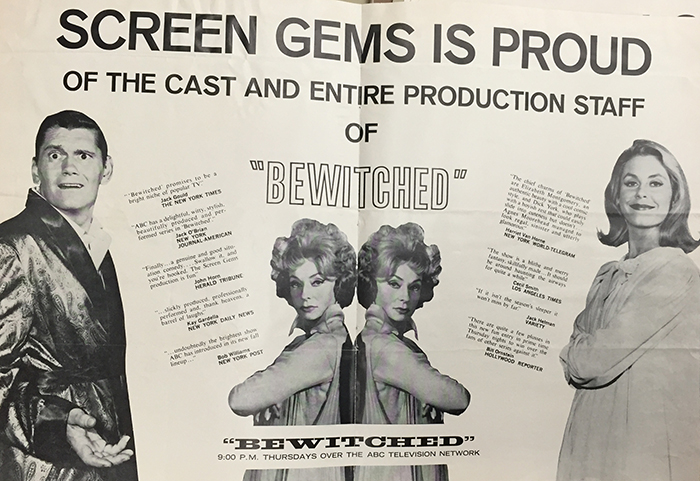

CAPTION: This is Agnes Moorehead's first-ever script, in which Endora is called simply, "Mother" and Samantha's name hadn't been changed from what it originally was, "Cassandra". Notice Moorehead's notes about other historical witches she's drawing on for inspiration.
This was not Moorehead's first time playing a witch. As she said, "I’ve never played a good witch before only bad ones both [as Witch] in "Rapunzel" and Mombi in "The Land of Oz" [on Shirley Temple's Storybook]. Both typical, wicked, storybook witches. But on this series I’m not at all wicked. I’m quite a sophisticaged gal. Endora is a very attractive and charming witch with a supernatural philosophy all her own. The humans in the script do plenty of very foolish things and she loves showing up their foolishness."
And so I jumped at the chance to comment on Montgomery and meet other fans who’ve continued practicing the magic Bewitched left behind, one of whom is David Pierce, author of The Bewitched History Book.
“Aside from the flamboyant dresses and severe makeup of Agnes Moorehead's Endora -- an inspiration to drag queens everywhere -- and the memorable performances of gay icon Paul Lynde (Uncle Arthur) in just 10 episodes -- there is a more serious connection to the gay community that this beloved comedy series holds,” Pierce said. “It is an example of how it is to be a part of the human family, when part of that family isn't accepting of your natural (or supernatural) born heritage.”
 Pierce shared a very thoughtful quote from an episode in which Samantha discovers that her daughter, Tabitha, is a witch too. Samantha says, “I know what fun it is to be a part of the magical life ... to have so much at your fingertips. But we’re living in a world that’s just not ready for people like us, and I’m afraid they may never be. So you’re going to have to learn when you can use your witchcraft and when you can’t.”
Pierce shared a very thoughtful quote from an episode in which Samantha discovers that her daughter, Tabitha, is a witch too. Samantha says, “I know what fun it is to be a part of the magical life ... to have so much at your fingertips. But we’re living in a world that’s just not ready for people like us, and I’m afraid they may never be. So you’re going to have to learn when you can use your witchcraft and when you can’t.”
Such moments in the series are not social or cultural “fan fiction,” where the world is re-imagined as tolerant within the confines of a 30 minute episode. No, in fact, the series acknowledges the dangers of difference not from the perspective of the mortal (or straight) community -- as TV so often does -- but from the perspective of the repressed. Bewitched never makes the argument that “coming out” will solve Samantha’s problems, because unlike even most contemporary gay programs, it acknowledges the complexities of such an endeavor, especially because coming out isn’t a singular event but an unending process. Every first encounter erects new closets that even an out-queer person must address on practically a daily basis.
Although “coming out” is represented occasionally as a relief for Samantha, it also echoes real life in that it can and does often lead toward greater isolation, bullying, and/or physical danger to bodies. Here's a full listing of every single time Samantha "came out" on the series.
In an interview with The Advocate, Montgomery commented on the show’s resonance within queer communities: “We talked about it on the set [t]hat this was about people not being allowed to be what they really are. If you think about it, Bewitched is about repression in general and all the frustration and trouble it can cause. It was a neat message to get across to people at that time in a subtle way.” (It’s important here to note that, for nearly the entire duration of Bewitched, being gay was not only against the law, it was a prisonable felony!)
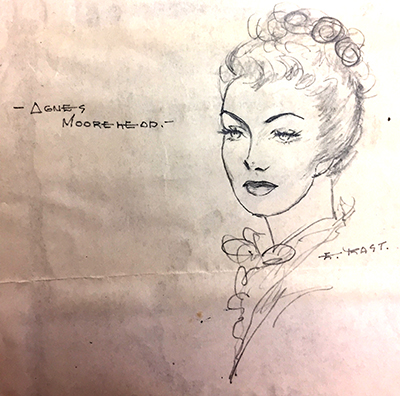
Melanie Parker co-creator of the terrific fansite Harpies Bizarre, says that our fascination with Bewitched may also be due in no small part to the queer actors on the set, including (but not limited to) Paul Lynde (Uncle Arthur), Maurice Evans (Maurice, Samantha’s father), and Dick Sargent (Darrin #2). Longstanding rumors, fueled by Lynde himself, also suggested Agnes Moorehead may have been a lesbian. Whether or not that rumor is true is beside the point, because Moorehead’s prominence as a queer icon is secured by her character. Afterall, Endora is perhaps the most ardently transgressive and queer character on Bewitched.
In many episodes, Samantha fights for the rights of witches, who were occasionally represented as a minority group, and those activist messages continued off-set in Montgomery’s real life. In Herbie J. Pilato’s excellent Montgomery biography, Twitch Upon a Star, he writes that she was one of the first celebrity allies to fight for LGBTQ rights and support HIV and AIDS-related charities. While others in Hollywood were keeping their distance from the issue, Montgomery attended events, spoke out, fundraised, and publicly supported her friend and co-star Dick Sargent.
Montgomery and her then-husband, Bewitched creator Bill Asher, were friends with Sargent and his partner Albert Williams during the run of the series. After The Star magazine outed Sargent in 1991, he decided to publicly come out, and in a later interview said Montgomery respected “the hell out of me for doing this. She thinks it’s marvelous and has nothing but encouraging words.”
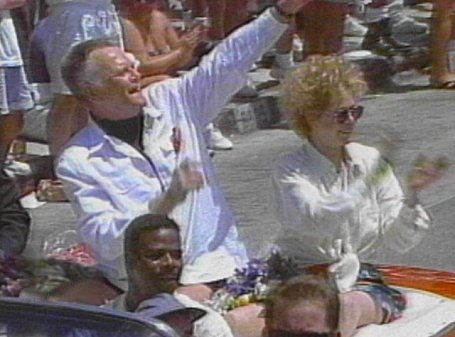 To show her support publicly, Montgomery reunited with Sargent to co-Marshall the 1992 Los Angeles Pride Parade. “In or out of the closet, I love him. He’s a super guy and a good friend. I’m happy for him and proud of him,” Montgomery said at the time. “From the minute I met him [I knew he was gay]. We didn’t talk about it for some time, and it was never this big conversation. I decided that it was his business, and I wasn’t about to intrude or give my opinion. Sometimes, that’s what being a friend is all about.”
To show her support publicly, Montgomery reunited with Sargent to co-Marshall the 1992 Los Angeles Pride Parade. “In or out of the closet, I love him. He’s a super guy and a good friend. I’m happy for him and proud of him,” Montgomery said at the time. “From the minute I met him [I knew he was gay]. We didn’t talk about it for some time, and it was never this big conversation. I decided that it was his business, and I wasn’t about to intrude or give my opinion. Sometimes, that’s what being a friend is all about.”
According to Pilato, Montgomery also used her 56th birthday to host the National Gay Rights Advocates celebration, whose honorees included her devoted manager Barry Krost. Along with her fourth husband, Robert Foxworth, she was also heavily involved with amfAR, the American Foundation for AIDS research, and APLA, AIDS Project Los Angeles.
When told by The Advocate in 1992 that she had become a gay icon, she said, “I am? I have absolutely no idea why. Don’t you have to be a hundred years old to be an icon?”
Nope. We love you, Lizzie!
9 Queer Dimensions of Bewitched
Assembled with the help of Adam-Michael James, author of the exhaustive and infintiely, fun Bewitched episode companion, The Bewitched Continuum.
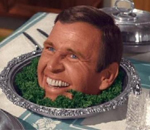 Paul Lynde
Paul Lynde
Bewitched put an unprecedented spotlight on the zany gay comedian, who was most memorable as Samantha's Uncle Arthur but began as neurotic driving instructor Harold Harold. Lynde was free to be himself throughout his 11 appearances, though perhaps his most open turn came in Season Three's Halloween episode, “Twitch or Treat” (#81).
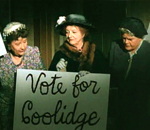 Fighting for Representation
Fighting for Representation
Samantha lobbied for mortals to drop their misconceptions about witches in both “The Witches Are Out” (#7) and “To Trick-or-Treat Or Not to Trick-or-Treat” (#177), and, in “The Leprechaun” (#63), Darrin's little-known mythical cousin wanted “a sympathetic and understanding presentation of mee image,” all allegories that can be applied to the straight world's LGBTQ stereotypes.
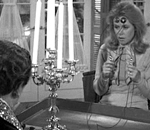 Repression Is Bad
Repression Is Bad
In both “Okay, Who's the Wise Witch?” (#195) and “Samantha's Psychic Pslip” (#225), Samantha comes down with witch illnesses as a direct result of denying her true self – and she passed this knowledge to Darrin in “Adam, Warlock or Washout?” (#242) by warning him that frustrating their son's burgeoning powers “would not only be unfair, but it could be harmful.”
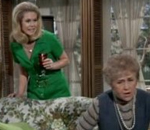
Coming Out Is Good
Samantha 'fessed up about herself in the first episode, but in “The Witches Are Out” (#7), her friend Mary wanted to “tell everyone that we're witches” so “they'd see what wonderful, nice people we really are.” Proving that coming out is multi-layered, Samantha repeated the process with her mother-in-law in “Samantha's Secret Is Discovered” (#188), citing “the relief of not having to pretend anymore.”
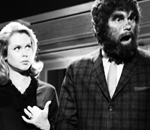 Hypocrisy
Hypocrisy
Thinking Darrin endorsed anti-witch images, Endora turned him into a werewolf in “Trick or Treat” (#43). But Samantha put Mother on blast, insisting “You're acting just like those ignorant people think a witch acts ... and you're doing it to the one person who was willing to believe we were different!”
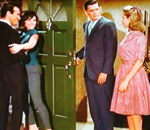 Doesn't Matter Who You Love
Doesn't Matter Who You Love
The Stephens' hottie neighbor, “Danger” O'Riley, said it all in “George the Warlock” (#30) upon learning her hunk wasn't human: “When a person's attracted to another one, why fight it?”
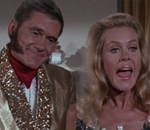 Progressive Pranks
Progressive Pranks
In “Illegal Separation” (#32), Abner Kravitz invited Darrin, who wanted a kiss from Samantha, to “pucker up.” “Weep No More, My Willow” (#152) had Larry asking if Samantha was facing competition from a man – and, when warlock John asked if witch Abigail was a thespian in “Samantha's Good News” (#168), she replied, “I beg your pardon!” Not to mention, Darrin went fey under a vanity spell in “Mirror, Mirror on the Wall” (#146); a bit stereotypical, but bold for prime-time in 1968.
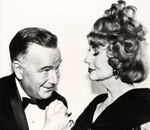 Endora and Maurice's Open Marriage
Endora and Maurice's Open Marriage
Samantha's parents live separately, travel in different circles, and are often seen cavorting with other partners. Though the term “open marriage” was never used, the concept was certainly acknowledged from Maurice and Endora's first scene together, likely making television history.
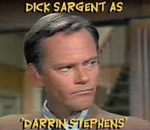 Dick Sargent
Dick Sargent
The actor will forever be compared to his predecessor, Dick York, but Elizabeth Montgomery and her producer/director husband, Bill Asher, knew Sargent was gay and cast him in the high-profile role of Darrin anyway. Twenty years after the show's cancellation, Montgomery and Sargent appeared together at 1992's Los Angeles Pride parade in support of his coming out.
Suggested Reading:
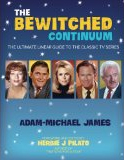 - The Bewitched Continuum: The Ultimate Linear Guide to the Classic TV Series by Adam-Michael James. - You'll feel like you're watching Bewitched with a friend while thumbing through this extraordinary episode companion. James' praise for the show and the performances of various actors is matched by his critiques of episodes that failed to measure up. Worth every penny, come for the bounty of information the book has to offer, stay for its fun and well-placed snark.
- The Bewitched Continuum: The Ultimate Linear Guide to the Classic TV Series by Adam-Michael James. - You'll feel like you're watching Bewitched with a friend while thumbing through this extraordinary episode companion. James' praise for the show and the performances of various actors is matched by his critiques of episodes that failed to measure up. Worth every penny, come for the bounty of information the book has to offer, stay for its fun and well-placed snark.
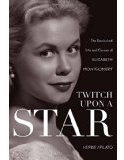 - Twitch Upon a Star: The Bewitched Life and Career of Elizabeth Montgomery by Herbie J. Pilato (available in Kindle edition). - This thick biography is a tour de force of Montgomery research and beautifully honors Lizzie's colorful if too-short life. Herbie is one of the most knowledgeable (if not the most) Bewitched experts out there.
- Twitch Upon a Star: The Bewitched Life and Career of Elizabeth Montgomery by Herbie J. Pilato (available in Kindle edition). - This thick biography is a tour de force of Montgomery research and beautifully honors Lizzie's colorful if too-short life. Herbie is one of the most knowledgeable (if not the most) Bewitched experts out there.
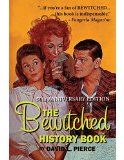 - The Bewitched History Book - 50th Anniversary Edition by David L. Pierce - Unfortunately, I've not yet had a chance to review this book, but it came to me highly recommended. Pierce was also extremely helpful in the process of writing this piece, and I'm grateful for his contributions.
- The Bewitched History Book - 50th Anniversary Edition by David L. Pierce - Unfortunately, I've not yet had a chance to review this book, but it came to me highly recommended. Pierce was also extremely helpful in the process of writing this piece, and I'm grateful for his contributions.
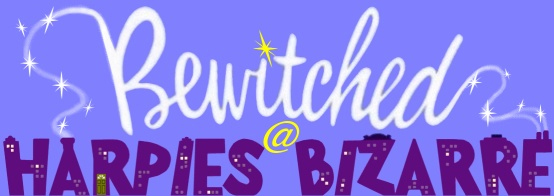
- Harpies Bizarre - Still going strong, Harpies Bizarre is an online magazine and fan community that has exhaustively-researched articles on everything Bewitched. I discovered it while looking for contemporary photos of the Bewitched house, and this tour of Morning Glory Circle is still one of my favorite pieces on the site.